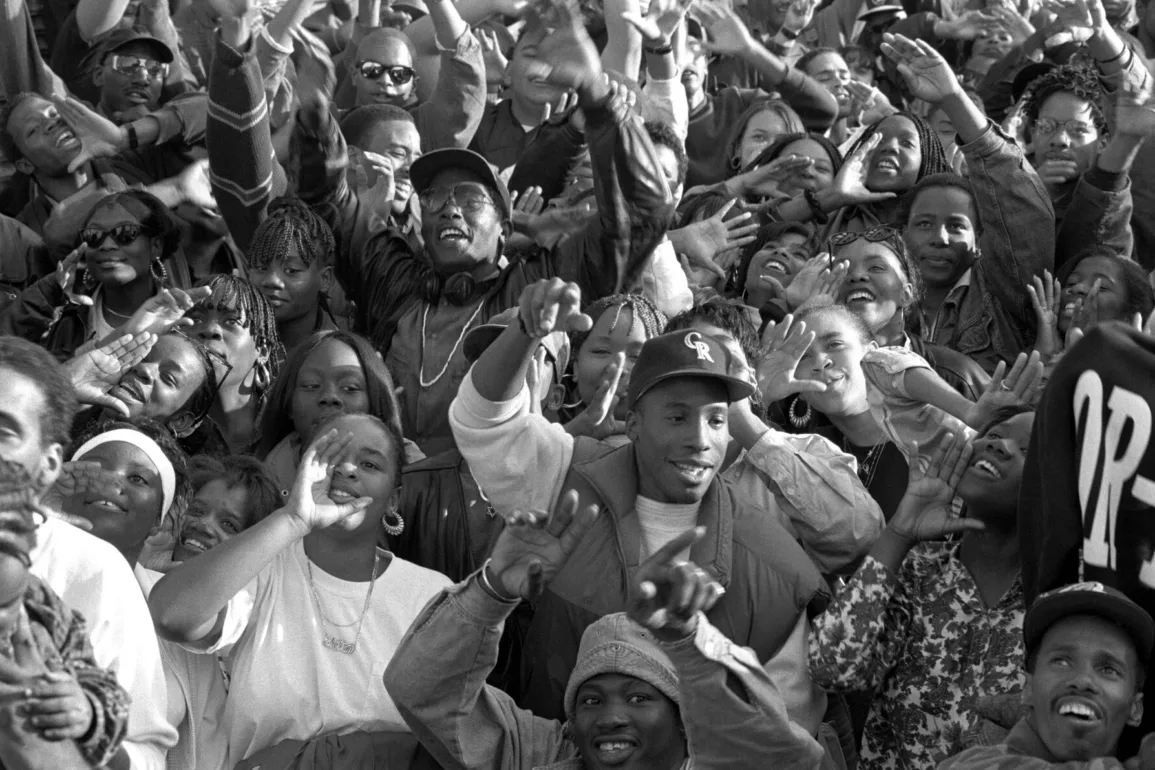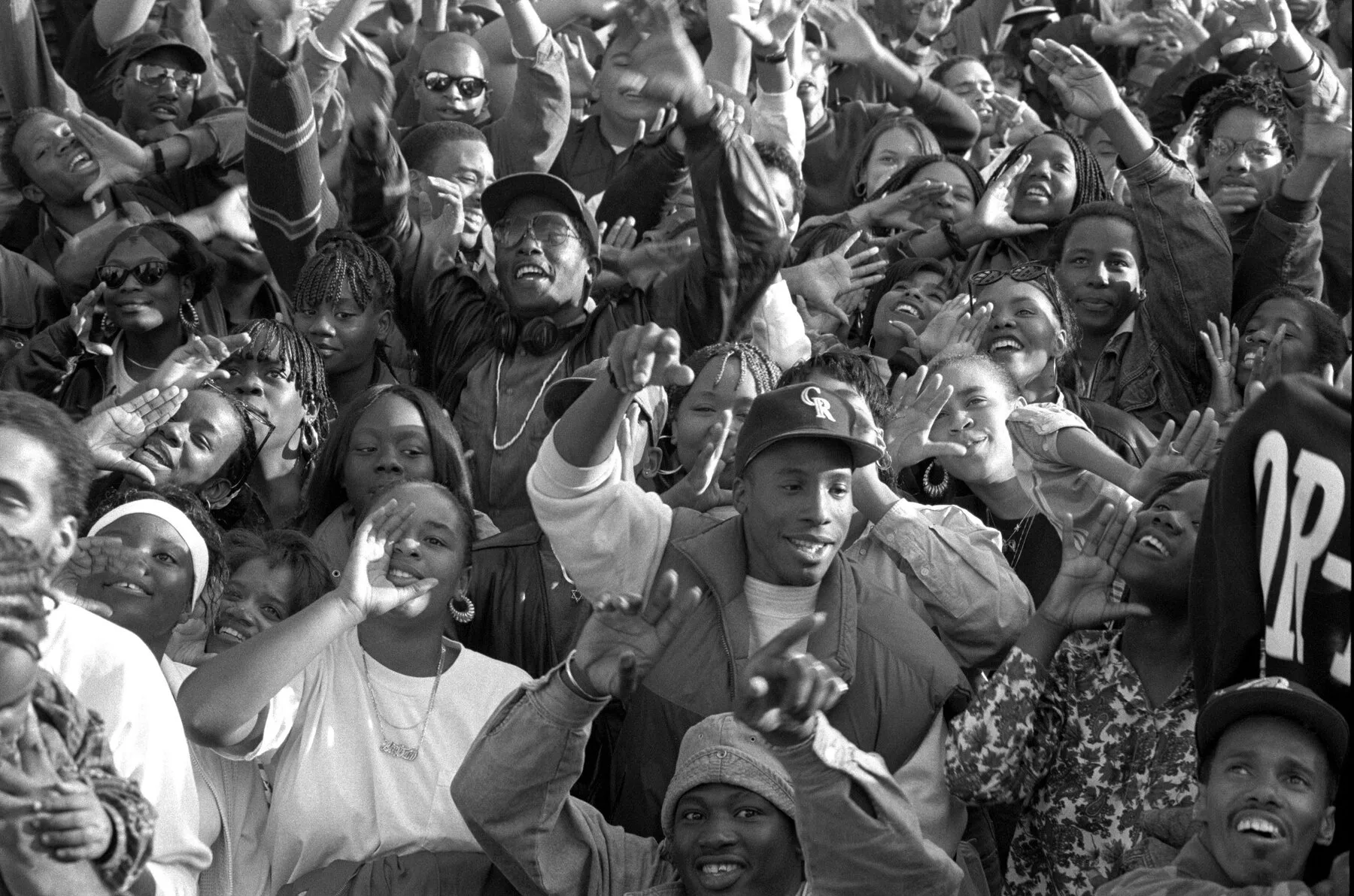
How Hip-Hop Conquered the World
Fifty years ago, a party in the Bronx jumpstarted an essential American artform. For decades the genre has thrived by explaining the country to itself.
We’ve gathered here today to raise a glass to hip-hop. It’s 50, baby! Half a century of effrontery, dexterity, elasticity, rambunctiousness, ridiculousness, bleakness, spunk, swagger, juice, jiggle and wit, of defiant arrogance, devastating humor, consumptive lust and violent distress, of innovation, danger, doubt and drip. Salud! I’ll be honest, though. I knew the magazine covers and concerts and TV specials were coming, but I wasn’t feeling it. Seemed too arbitrary a date. Or maybe just impossible to ascertain. What I did feel was that hip-hop has so thoroughly infused the atmosphere of American life (we’ll just start with this country), that it has pushed so much forward — who cares that it’s pushing 50?
Listen to This Article
The energy giving this form its art, this life its force — wasn’t that forged centuries ago with every African hauled onto this land? As far I could tell, hip-hop was just “always.” That energy has been with us Black Americans — in church, on stages, in studios, on the streets, in outfits and hair and posture and teeth, glinting, grinning, gritting, smirking, snarling, beaming, blinging. Simply smiling a miraculous-ass smile. So this anniversary couldn’t matter, according to me, because — well, isn’t it just on a continuum that bends from the African drum to the spiritual to ragtime, jazz, gospel and the blues, to R.&B., folk, rock ’n’ roll, funk, disco, new wave and house? Isn’t it also just more soul music, an energy that never dissipates but simply changes hosts?
Well …
Well …
I was down to bring that dogma to my grave. But somebody made a case, and the case made a fool of me. It was February, at the Grammys, when in the middle of the broadcast, almost two dozen rap acts took the stage, one by one, and owned the history they made, the history they were. There was even a historian: Ahmir (Questlove) Thompson, who, among sundry other skills and passions, drums for the Roots and harbors a knack for the fine print and footnotes of American popular music.
For Grammy night, his job entailed boiling down five decades to 15 minutes, and some uncanny artisanship resulted. On the generations came, each one submitting no more than a snippet — a TikTok-ya-don’t-stop, if you will. The Roots’ rapper in chief, Black Thought, opened with a fairy tale. “Fifty years ago, a street princess was born to be an icon,” it began. Then appeared a whirl of originators. Grandmaster Flash with Barshon, Melle Mel, Rahiem and Scorpio, who melded into Run-DMC. And Run-DMC into LL Cool J. LL Cool J into DJ Jazzy Jeff. Jazzy Jeff into Salt-N-Pepa. Those two into Rakim, who was followed by Chuck D and Flavor Flav. That was simply the first course of three loosely chronological movements. The third closed with the progeny: Lil Baby then GloRilla then Lil Uzi Vert.
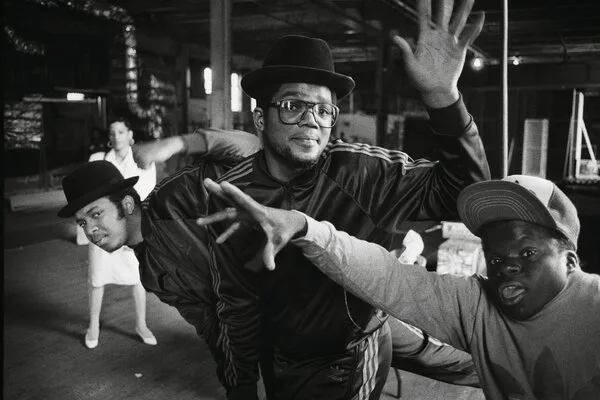
Run-DMC with their fan Teddy No Neck, 1985.
Josh Cheuse
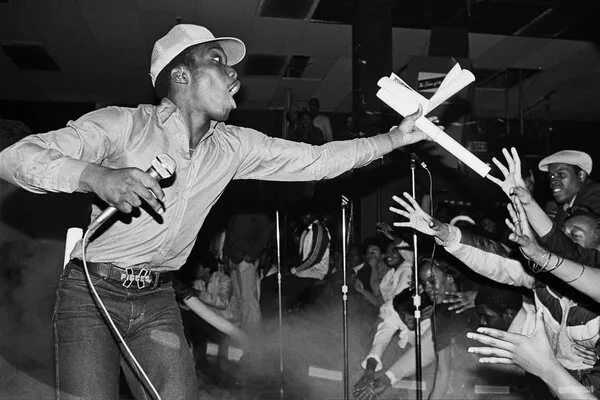



Almighty Kay Gee of the Cold Crush Brothers at Harlem World, 1981.
Joe Conzo Archives
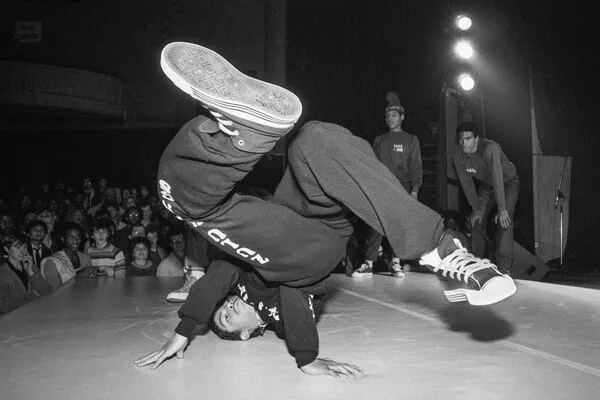



The break dancers Ken Swift and, in the background, Take One and Frosty Freeze of Rock Steady Crew, 1982.
David Corio
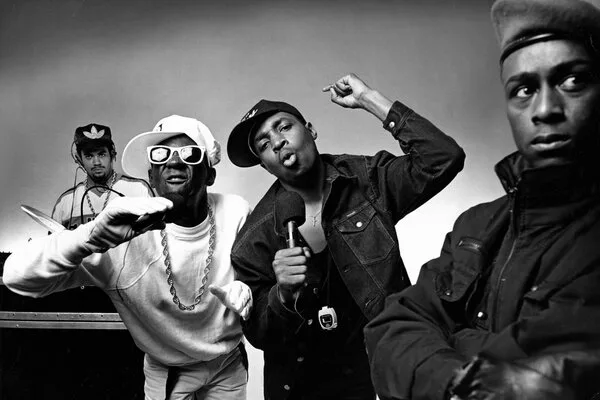



Terminator X, Falvor Flav, Chuck D and Professor Griff of Public Enemy, 1987.
Jack Mitchell/Getty Images
The performances may not have lasted long. But revelations overtook me anyway, like how physical this music has always been to make, how bodily. Salt-N-Pepa, Kid ’n Play, MC Hammer, Missy Elliott, Beyoncé — they dance. That’s not what I mean. I’m talking about how you can’t just stand there and rap. Hands jab. Wrists snap. Heels stomp. Heads nod, bob, swivel, swing. Whatever parts can make action, do: Fingers, shoulders, brows. Used to be the move to kind of bow your legs, one hand on each thigh, bend forward and rock. LL would do this so hard his gold ropes would be punching him in the mouth. Suddenly something amazed me that just an hour before seemed as elemental as “it takes two to make a thing go right.” And that’s this: The body raps, too.
Listen, I could go on, droolingly, about innate hip-hop hotness, about the bodaciousness of physiques: LL and Lil’ Kim, Tupac, Trina and 50 Cent; about Cardi B. About the rocket-science profundity in the hook of one of Megan Thee Stallion’s hits:
“Body-ody-ody-ody-ody-ody-ody- ody-ody-ody-ody-ody-ody-ody-ody”
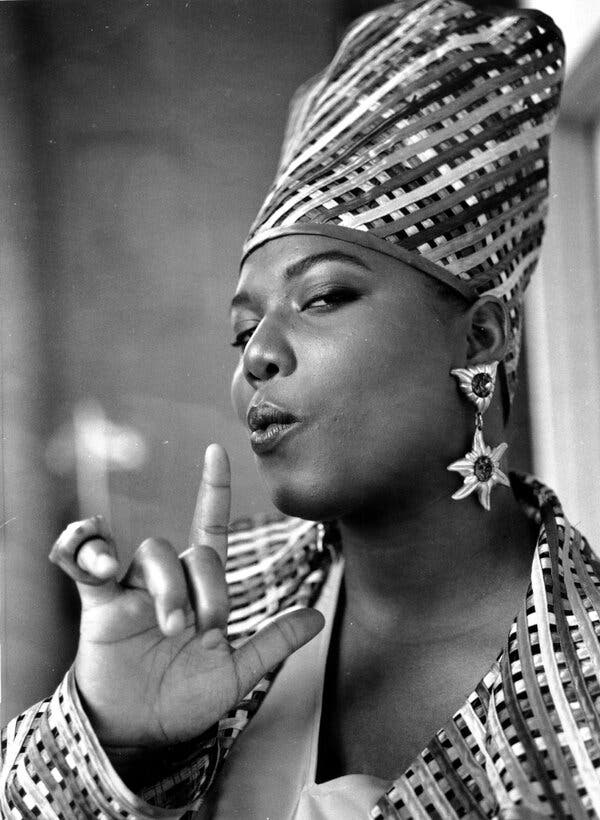



But I think what was actually dawning on me that night had less do with hip-hop’s erotic possibilities and more to do with a new (also sexy) frontier: the accrual of carriage, grace, prestige, of stature. Now, this didn’t hit me until Queen Latifah took the stage to do a snatch of “U.N.I.T.Y.” What she wore was black and puffed; her vest, it sparkled. What astral slope had she downhilled to be there? In her early prime, Latifah’s limbs and head epitomized this style of embodiment. She nodded with aggression, yet her conical African hats (crowns!) refused to capsize. She could still throw down but in the way only someone in middle age might, with the force of calm, the surety of having fully lived. When I was 13, my question — everybody’s question — was what could this music look like at 50? Would it just be the old dude trying to mack at the club? Washed up. Sad. Mm mm. It really could be like going to catch Dee Dee Bridgewater or Dianne Reeves or Cassandra Wilson at Lincoln Center. It could be this. Grand. Presidential.
None of this resplendence was irony-free. We’re talking about the celebration of an art form by an awards show that neglected it. The Grammys’ first rap category didn’t arrive until 1989, and there had been no plan to present the award during the live broadcast. So some of the nominated acts, including the Fresh Prince, Will Smith and Salt-N-Pepa, boycotted. Turbulence has abounded ever since. Hip-hop may have, as Black Thought declared during the anniversary segment’s curtain raiser, come to dominate the world, but only twice has it won album of the year. And the community has come to feel some type of way.
Here then is why I can’t exclaim that hip-hop is on a continuum and call it a day. Here is why it’s apart from spirituals and jazz, blues, R.&B. and rock ’n’ roll while also being apiece. Here’s why the passage of these decades matters: Hip-hop, baby of the American musical family, has for 50 years been a contested category, unsettled because it remains unsettling, somehow unsung despite its centrality to multitudes. Tears salted my pizza that night because what I thought would be another awards-show nostalgia spasm was really a proclamation of endurance and a pungent condemnation. Here is music you can hear while dining out at a place where the only Black people are you and the dining room’s soundtrack. There aren’t many countries left on this planet that don’t have some kind of hip-hop scene or rap patois, some at-best oblivious comfort with “nigga” this and that. Yet there’s often a chip on some rapper’s shoulder, on some rap fan’s. Because it’s quite something, half a century in, to carry with you the suspicion that the thing you made might be valued more than the people you are. This is a continuum concern, of course: Every phase of Black artistic achievement treks through that cognitive-dissonance zone. The Negro spiritual is the other major American music whose existence floodlights a crime. But spirituals sought deliverance from this country’s original sin. Hip-hop doesn’t expect salvation. An alternate reality drives its craftspeople. Maybe nobody wants us to succeed. So we’ll deliver ourselves. Let’s build an empire from that.
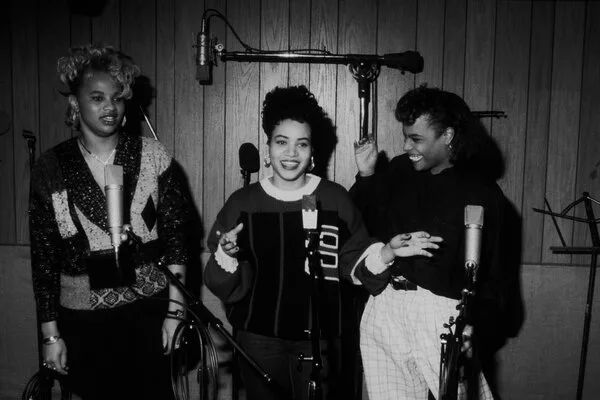



Pepa, Salt and DJ Spinderella of Salt-N-Pepa, 1989.
Al Pereira/Michael Ochs Archives, via Getty Images




Biz Markie, 2001.
Mike Schreiber
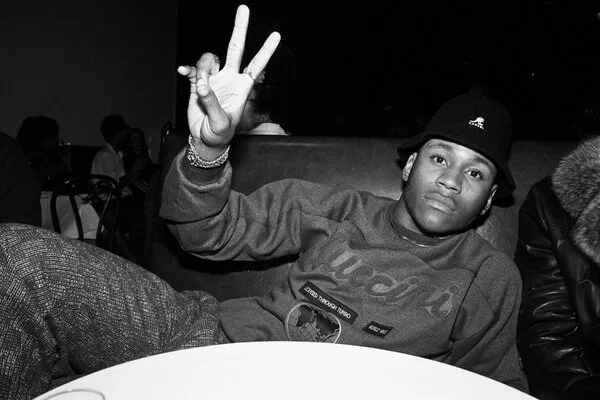



LL Cool J, 1988.
Catherine McGann/Getty Images
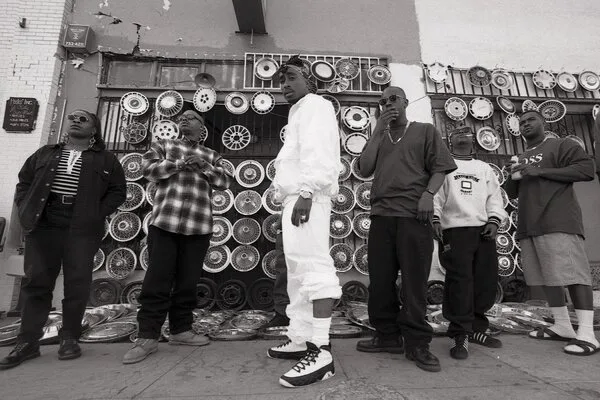



Tupac (center), 1994.
Mike Miller
I’m just younger enough than hip-hop to have taken the empire for granted all these decades and just old enough to ask some urgent questions. What’s the point of this art form anyway? Why did we need it? Why did we need it so bad that it spread from the Bronx to everywhere else? Would there even be hip-hop had events in this country gone differently, gone farther, in Black Americans’ favor. Then I suppose I have to ask: which events? And how many would have had to go just right and stay right in order to complete Black Americans’ trajectory toward actual freedom, to head off the full force of hip-hop’s coming this vibrantly to life? Some back-of-the-napkin ruminating tells me that hip-hop was inevitable because this country has never been consistently sure about how to treat us. The mere fact of hip-hop denounces that inconsistency. It maybe shouldn’t exist. But here it is. In everything. Indiciting.
This 50th anniversary dates to the night, in the Bronx, in August 1973, that Kool Herc stood over a set of turntables and combined two records to form one continuous breakbeat. Doesn’t sound too seismic when you put it that way. But this was it: the Big Bang, a mythical event. And when you do put it that way, these 50 years really do have to stand on their own. The earliest blues artists were enslaved. Depending on when you think jazz was born — we’re talking about both history and mythology here — its originators had parents who were enslaved. The inventors of rock ’n’ roll hail-hailed from parts central and south. But hip-hop happens right about when the Great Migration winds down. Its beginnings are overwhelmingly Northern and completely urban.
A D.J. would play records, and crews would dance. The early M.C.s? They were personalities who sometimes talked over the music. Rhyming and beat-making machinery, those came later. Inertia? Idleness? Conditions hip-hop was born trying to solve. How to keep b-boys and b-girls breaking all night? D.J.s invented the cure. “Hip-hop” identified a culture that already existed but made kids, adolescents and barely-adults make sense to themselves. The new New Negroes — fresh, then dope, then fly, then fire, then rizzy. They were also, to invoke a timeless community-outreach, daily-news euphemism, at-risk. Condemned.
This music had penury, denial and neglect in common with its forebears and was developed down in a particularly hopeless ravine, amid the national abandonment of the post-Civil Rights movement, after the feel-good Blackness of Motown was deemed passé, when Afros and dashikis were part of the urban uniform and even Sidney Poitier was directing blaxploitation movies. White suburbanites rallied to stop Richard Nixon from stopping housing discrimination (not that ending it was his idea). Ronald Reagan slashed the housing-and-urban-development budget by about 70 percent. Elevators stayed broken. Trash piled up. Drugs stormed in and with them even harsher law enforcement. (Oh! Guess what else turns 50 this year: the D.E.A.)
You might expect a blues to take hold, or at least an ambivalence. Nope. An exuberant, insistent, impossible resolve defined early hip-hop, the jive part of the blues, the imaginative toughness, the tautological thriving. “That’s the breaks, that’s the breaks.” “It’s like a jungle sometimes. It makes me wonder how I keep from going under.” “It’s like that, and that’s the way it is. Huuh!”
The music was streetbound, and the people performing it could be as hard as concrete and blacktop, as smooth as menthol smoke, in leather and velour and denim, in Shelltops, Jordans. And eventually Tims, in Coogis, in tracksuits with Kangols, Cazals, stopwatches and kitchen-clock garlands, gold ropes you could use to moor a yacht and gold earrings fit for announcing yourself at a castle door. They were battle-tested, arriving as victors, always slaying never slain; canniness and certitude were more important than luck. Defense outfitted as offense — pre-emptive style. LL Cool J’s first appearance on the Billboard Hot 100 was for the scratchy, boom-bapping wall-crawler he called “I’m Bad,” and the interludes of a police manhunt between the verses tell me he knew that, not even a quarter century before, he might have been nightsticked (at best) for thinking so highly of himself.
The thrill of the music, the lifestyle — that life force — has been in its array of swaggers: MC Lyte’s sniping allergy to fools, Big Daddy Kane’s lounging back-pats (his own), Rakim’s cashmere self-portraiture, Salt-N-Pepa’s tag-team assertiveness. The audacity of both bagginess and hip-huggery. The collage work rightly deemed mix-mastery. Eyebrows might arch at any art form as reliant upon the performance of cockiness. But when vertiginous pride emanates from Black egos, eyes tend to burn in their sockets.
It’s not as if Black artistic expression has ever relied on doubt. Consider all that it took for Duke Ellington, Ella Fitzgerald, Dinah Washington, Billie Holiday or for Mahalia Jackson, Nat King Cole, Sammy Davis Jr. or Miles Davis, for the Supremes and the Temptations to embody then exude excellence during an era in which that sort of confidence was all but illegal in certain counties, when you were likely to have had a parent who fled those places. It’s just that a certain decorum was expected.
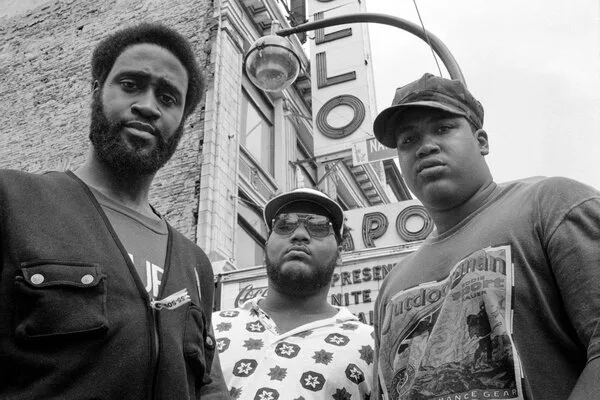



Posdnous, Maseo and Trugoy The Dove of De La Soul, 1993.
David Corio/Redferns, via Getty Images




The Notorious B.I.G., 1995.
Jonathan Mannion




DJ Yella, MC Ren, Easy-E and Dr. Dre of N.W.A.
Lgi Stock/Corbis, via VCG, via Getty Images
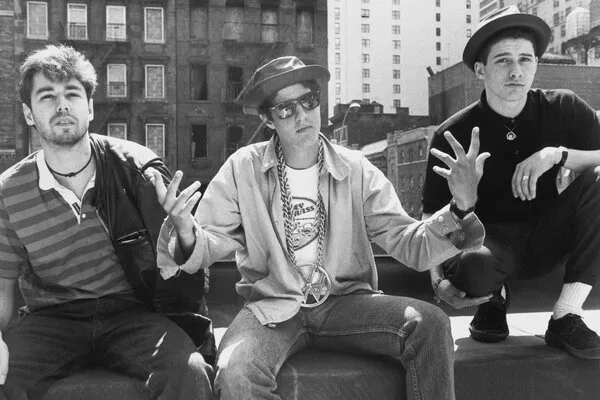



MCA, Mike D and Ad-Rock of the Beastie Boys, 1987
Vinnie Zuffante/Michael Ochs Archives, via Getty Images
Take Motown. Berry Gordy put his artists through a rigorous etiquette program, to make them palatable to the crowds of Jim Crow-tolerant white people who would be seeing them in concert or from their living rooms. I’ve wondered what kind of rappers a charm school might produce. I’ve also thought about what just a little charmlessness might have done for — or to! — the Motown sound. Charm afforded Motown its bounteous luxury. But by the late 1970s and early 1980s, Black decorum had reached its political limit. Gordy’s big new star was the magnetically louche Rick James, a hip-hop progenitor. The early rappers weren’t arguing for integration. They cultivated iconography all their own: hair styles, accessories, attitudes, these celebratory exponents of apartness, of apartheid (in America). The art form’s greatest innovation was its mass-production of unfettered, un-self-conscious self-esteem, of retributive refulgence. Boy, could you feel that. Friends and classmates took on such an unsinkable boldness that I can’t imagine them without this music and its style.
But around the country, all kinds of people were encouraged, by Hollywood and the news, to be scared of Black youth (as they were called). Some of those people took out full-page ads wishing them the death penalty. Some chased them from neighborhoods and mistook them for piñatas. Our parents, though, weren’t afraid of the kids and the rappers those kids adored, not necessarily. The moms and dads and grandparents, the aunts, uncles and older cousins, understood the old life-or-death stakes. They knew that hip-hop had unleashed a new confrontational energy. They were afraid for them.
I’ve thought sincerely about whether hip-hop’s boastfulness was a wonder drug for Black psyches in search of street-level hope. These rappers emerged from the same poverty a lot of us knew. But they turned that doubt into bright-sided art. So many Black children were scolded and mocked for dreaming of careers in basketball and rap. The odds were worse than low. We’re talking about young people, though. They dream. Somebody really is always making it in hip-hop. Why not one of them? I grew up watching all the practicing and rehearsing and studying, the rigor. The dream was big. They knew they could maybe be paid to fly, paid to flow. They could turn on a radio or press play on a mixtape and hear the flight.
For 50 years, the essential writing — fables, comedies, diaries; adventure, memoir, porn — about young Black life in this country has been happening in hip-hop. Songs about feelings, fantasies, dilemmas, confessions, fantasias. What else is Notorious B.I.G.’s “Ready to Die” and its grueling, knowing, melodic re-creation of moral decay and sexual congress other than a triumph of literature? It is but one title on a shelf buckling with scores of comparable powerhouses. That’s one masterpiece set in New York.
What eventually brews in Houston and Atlanta, Miami, New Orleans and Memphis, in Virginia and California, deepens hip-hop, takes it into freaky, funky, bouncy, hilarious, mischievously brewed realms, dark, dreamy, unstable landscapes. Frailty, paranoia, trippiness, Afrocentrism and minimalism emerge. It’s music mining the past but potently about the present, often about itself. Hip-hop kids didn’t know a national struggle for civil rights as more than lore or part of a lesson plan. They had experienced personal strife — the struggle for food, shelter, safety, stability, jobs and respect. How many of these artists came of age in or adjacent to public housing and the criminal-justice system? Plight was in the art.
Hip-hop represents a break with the past because it exploded out of something that broke: this country’s promise to its Black citizens. And unlike aspects of jazz and Motown, this new music wouldn’t be arguing for its resplendence, worthiness and incomparable ingenuity. Salves, appeasement, subtlety, civility, love — those evidently didn’t work because here we are. Bring the noise.
Its practitioners may have attended church, but there’s little church in this music, especially during its first waves, just communal jubilation and the streets. “La di da di, we like to party” alongside “I never prayed to God, I prayed to Gotti.” Hip-hop arose from want. It thrived in gain. The average love song culminates in consumption, brandishing what has been consumed. Capitalism has been trying to turn its back on Black America and to break Black America’s back. Hip-hop is Julia Roberts after being written off in “Pretty Woman” by that snooty sales lady: Big mistake. Big. Huge. The drug dealers and gangbangers weren’t my cup of tea. I more naturally gravitated to the nerds, bohemians and space cadets, the corners of the music that got called “conscious rap.” But I never bought that designation. You don’t enumerate the risks and luxuriate in the spoils of, say, the drug business unconsciously. How could you lavish such attention on production and rhythm, how could you realize such vision, with half a mind? Choices are being made, the choice to be frank, blunt, hyperbolic, wishful, catchy. Whatever pathology’s in the art form mirrors whatever pathology exists in the environment, in hip-hop’s, in the nation’s. “Cash rules everything around me” — “C.R.E.A.M”— functions as much as an excuse as it does as a rationale. Luxury has become a source of irony (I mean, the fact of Gucci Mane, alone) and a kind of getting even. What’s it Bey said? Best revenge is your paper.
Before that reunion at the Grammys, I knew all the places the life force had gone and all it had come to mean. But after, I got to thinking about its stupendous range. Take the rap voice, for instance. It’s an instrument with timbres and pitches that expand at least my understanding of what else it means to sing — and if it’s Ol’ Dirty Bastard, Eminem, Nicki Minaj and Kendrick Lamar, we’re talking about singing in the rain, a monsoon. There’s almost nowhere hip-hop hasn’t been: the White House, the Pulitzers, the Oscars, the sitcom, the Louvre, syllabi, country radio, fashion week, Sesame Street. It uses some of everything, and everything uses some of it. But its longevity and ubiquity amount to more than what’s stamped in its passport. Even when its practitioners aren’t Black, maybe especially when they’re white, hip-hop incriminates the country that drove its people to dream it up in the first place. For it contains the stubborn truth of how America has felt about certain Americans. Hip-hop is what this country gets.
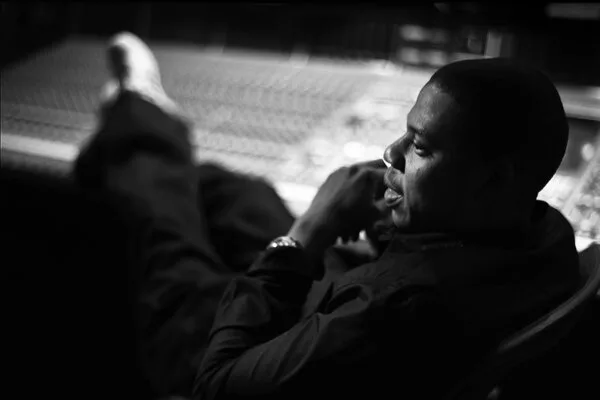



Jay-Z, 2007.
Damon Winter/The New York Times
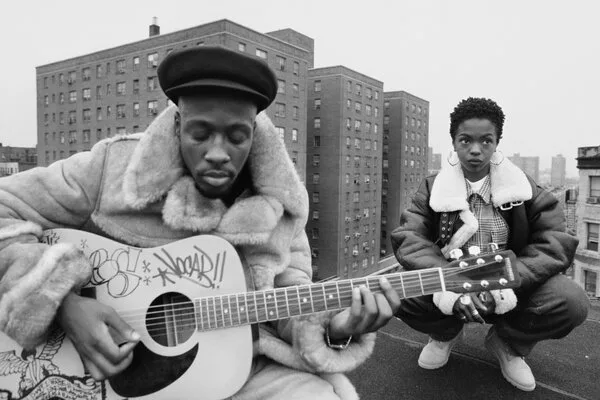



Wyclef Jean and Lauryn Hill of the Fugees, 1993.
Lisa Leone
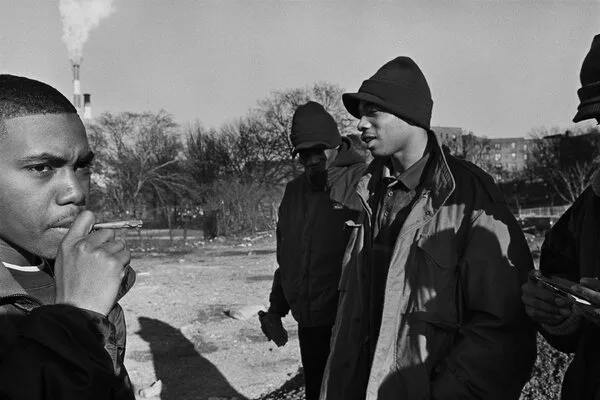



Nas, far left, with friends in Queens, 1993.
Danny Clinch
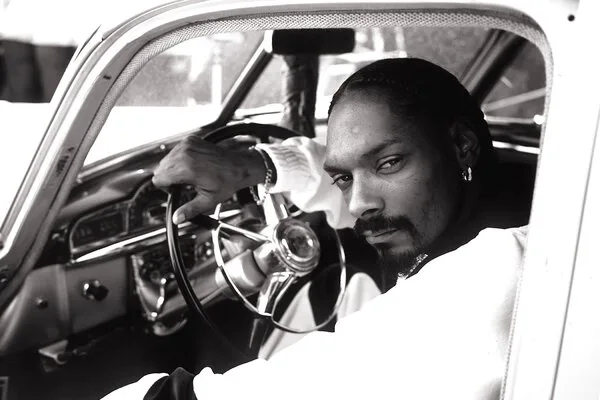



Snoop Dogg, 2000.
Mike Miller
It still possesses incantatory powers. But it also continues to acquire a tremendous capacity for melancholy, for a blues of sorts. The same group who fretted about C.R.E.A.M. also chanted, in harmony, that “you can’t party your life away, drink your life away, smoke your life away, [expletive] your life away, dream your life away, scheme your life away, ’cause your seeds grow up the same way.” That was 26 years ago. In the B.L.M. era, the seeds sound addled. The early boom-bap and the disco backbeats that exploded into a galaxy of sounds has, in its current incarnation, returned to a new, samey orthodoxy of beats that, for not much longer than two minutes, stutter, drag and drone. A little weed used to be all a rapper needed to get by; now it’s zany. It’s not just nerves that seek settling anymore. It’s entire psyches. The canon makes room for breakdowns: Lauryn Hill’s, Kendrick Lamar’s, Kanye West’s. Happiness and abandon are now hard to come by, that old sauce. The rappers seem to know this. They’re rhyming with a lot fewer words for the moment. The sound of some of this music doubles as another environmental mirror. Somebody thought to call it “trap.”
Maybe another reason that that Grammy anniversary segment got to me was that it worked in defiance of the current gravity. It felt stress-free and full of exhalation, but, as crucial, also put inhalation on poignant display. As a practical matter, this wasn’t news. We karaoke people have our personal Everests. “Paid in Full” and “Mama Said Knock You Out” are mine. Very different songs in divergent styles. One is silk, the other is steroids. To pull either off, you have to know how to breathe. This is true enough for singing. But rapping requires the kind of respiration that a swimmer depends on: mechanical but rhythmic. (To excel at either, it helps to know your way around a freestyle.) Rappers have to time when in the stroke to snatch some air. Snatch wrong and choke. You have to be precise while still being you. Some rappers, like Busta Rhymes, rarely get caught taking a breath. A karaoke rapper will tell you: It’s not for the weak. I know someone who can perform “Tha Crossroads” as though Bone Thugs-n-Harmony were his government name. But by the time he’s done, he practically needs CPR.
At the Grammys, as Busta stood there and 50-meter-backstroked his way through “Look at Me Now,” no one seemed to quite believe that he could still rap that fast that breathlessly. It wasn’t him at his most pinpoint. (His stroke made a lot of splash.) But when he finished, nobody called the paramedics either. They cheered. Cheered the dexterity, obviously, but also that he still had it, that everybody over the age of what, 28?, still had it, could still do the one thing we’ve heard so many of us, in states of distress, plead for: breathe.
Nobody thought it would last this long. Maybe that’s some deeply ingrained self-doubt talking. Not everything lasts. And not everybody made it. Reason enough to pause and pay tribute, to say, “hip-hop hooray!” What they’ve made, however, has lasted. That’s what started my waterworks. Everybody was still breathing. Yeah, many of them are still alive and all. But also: They’re still able to make breath, deep, exhilarating breath.


